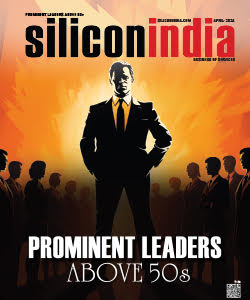10 Steps to Starting a Photo Blog for Your Friends
![]() Creating your own site is the perfect way to preserve the memories of you and your friends. But not everyone has the skills to design and build their own sites. Fortunately, there are many tools and resources to help you start a blog even if you're not technically inclined. In fact, you can set up a blog in 20 minutes or less and build a decent looking site within a couple of hours with the right directions. Here is a 10-step guide to starting your very own photo blog.
Creating your own site is the perfect way to preserve the memories of you and your friends. But not everyone has the skills to design and build their own sites. Fortunately, there are many tools and resources to help you start a blog even if you're not technically inclined. In fact, you can set up a blog in 20 minutes or less and build a decent looking site within a couple of hours with the right directions. Here is a 10-step guide to starting your very own photo blog.
Step 1: Choose Domain, Web Host and Platform
If you want to have total control of your site, you will want to set up your own domain. You can register a domain by going to Godaddy.com or any other registrar. You will then want to get a basic hosting plan which can cost anywhere from $3 to $10 a month depending on the web host provider. Once you set that up, you will want to install WordPress as a website building platform due to its simplicity. All these steps are very straightforward as most of these services provide video tutorials and tech support to get you set up.
Step 2: Find a Theme
A theme is basically a template for your WordPress site. It's important to understand that many themes are more than templates you use. They also are site builders that allow you to customize many elements from the colors, headers, logo, layout, etc. WordPress offers a large library of free themes at https://wordpress.org/themes/. You'll be able to find designs across a large range of categories from business, art, technology to of course, photography.
Step 3: Find the Right Plugins
WordPress plugins are upgrades that enhance the functionality of your site. There are many plugins that can help you add the features you're looking for. Some plugins that can work great for photo blogs include Envira Gallery (gallery creator), Soliloquy (slider generator) and Easy Watermark (to protect your photos) just to name a few. Just go to https://wordpress.org/plugins/ and look around for plugins that may be useful to your site. The majority of the plugins listed on the site will be free.
Step 4: Create a Navigation Menu and Main Pages
The next step is to create a simple navigation that links to your main pages. You will want to build basic pages like the About, Contact and Help pages. Then, you want to think about how you want to organize your photos so that you can create category pages. If you have a lot of photos, you want to create category pages for specific groups of photos because putting all your photos on one page will result in long load times. It will also be easier and intuitive to browse through category pages.
Step 5: Create a Basic Navigation Menu and Layout
After you've created a basic navigation menu and your main pages, you need to move forward with a layout. Most basic blogs use a simple two-column layout with a side bar column that has category and archive links to your posts. If you want to add widgets to your site, you may want to go with a three-column layout with two sidebars as trying to add both the category/archive links and widgets on one column can be distracting and confusing.
Step 6: Organize Your Photos and Choose the Best Ones
If you want your friends to know what they're looking at, you want to put in the time to organize your photos. Group photos by events and consider arranging them in chronological order. If you want to go the extra mile, you may want to tags to your photos so that can be searched. This is also a good time to go through your photos and choose the best shots. This will get rid of low quality shots, reduce load times and provide a better viewing experience for your friends.
Step 7: Add Captions to Photos
If you want your friends to get the most out of your photos, it will help to add context to your photos. Simply add captions with a solid photo gallery plugin. That will give your friends an idea of where the photos are from, what happened during an event and what went on in the picture. It's a fun way to create a conversation piece for the next time you and your friends get together.
Step 8: Optimize Your Photos
Posting high quality photos often leads to long loading times on your site. This can ruin the browsing experience for users. To avoid this problem, use image-optimizing programs to bring down the size of your image files. Many of these programs will help you reduce file sizes without reducing hurting the quality much.
Step 9: Create Interesting, Fun and Exciting Content
If you want your friends to really enjoy the blog, do more than just post photos. Create content based on your photos and tell a story. Post videos every now and then to mix it up. Simply posting random photos over and over again can get old really fast. You want to make it interesting, fun and exciting for the readers. That will want your friends to keep coming back to the blog and give you a reason for updating it.
Step 10: Set Up Email and Social Media Accounts
If you want to keep your friends updated of new posts, you need to have some way to notify them. Creating an email subscription box and setting up social media accounts will be the solution. You can manage a small email list for free by signing up with MailChimp. You can then set up follow links to your Facebook, Twitter or Instagram accounts to stay connected with your friends.
This is all the information you need to start a blog. Simply follow these 10 steps and you'll have a fully built blog in a day or two.
Read more news:
Corporate Scams that Shook the Nation
Microsoft completes renewable energy deal for Bengaluru facility


.jpg)
